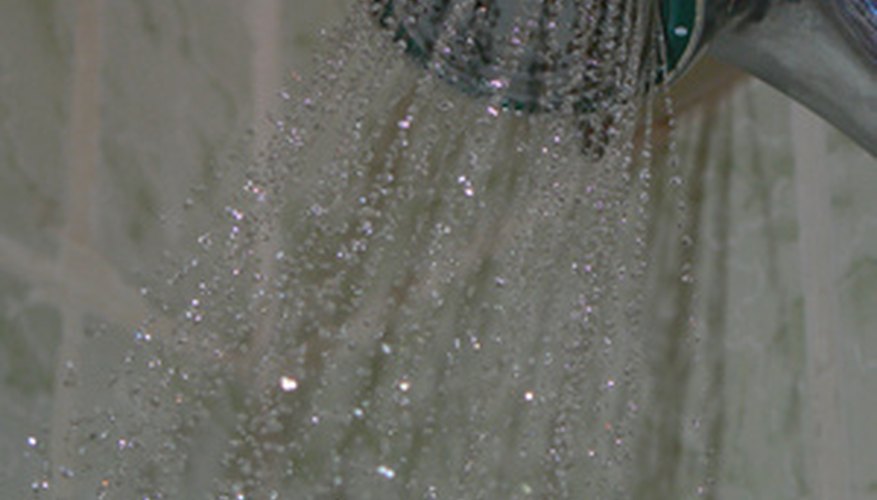Fibreglass is made up of very thin particles of glass. When fibreglass is cut, trimmed or otherwise worked on, it creates dust and loose particles that can get into your skin and cause irritation. It's advisable to take precautions and wear protective clothing, such as long sleeves, gloves and a face mask, when working with fibreglass to prevent skin irritation. Still, some particles may slip through the protective barriers, leaving you itching and seeking relief.
- Fibreglass is made up of very thin particles of glass.
- Still, some particles may slip through the protective barriers, leaving you itching and seeking relief.
Rinse the irritated skin under cold water or take a cold shower. The water washes away any loose fibreglass particles to prevent additional irritation.
Use masking tape to pull off fibreglass stuck on your skin. Put the sticky side on the skin and gently press down on the affected area. Then rip the tape off to pull out the particles.
Take a bath with hot and steaming water. The steam and water opens your pores, releasing any of the fibreglass particles still stuck in your skin.
Cover the irritated skin with a generous amount of lotion or oil. This helps loosen up any fibres that remain in the skin and hastens extraction.
- Take a bath with hot and steaming water.
- Cover the irritated skin with a generous amount of lotion or oil.
Rub or wet your skin with acetone. Nail polish remover is a household item that contains acetone. The acetone essentially breaks down the fibreglass in your skin to eliminate the irritation. Then use soap and water to wash off the acetone.
